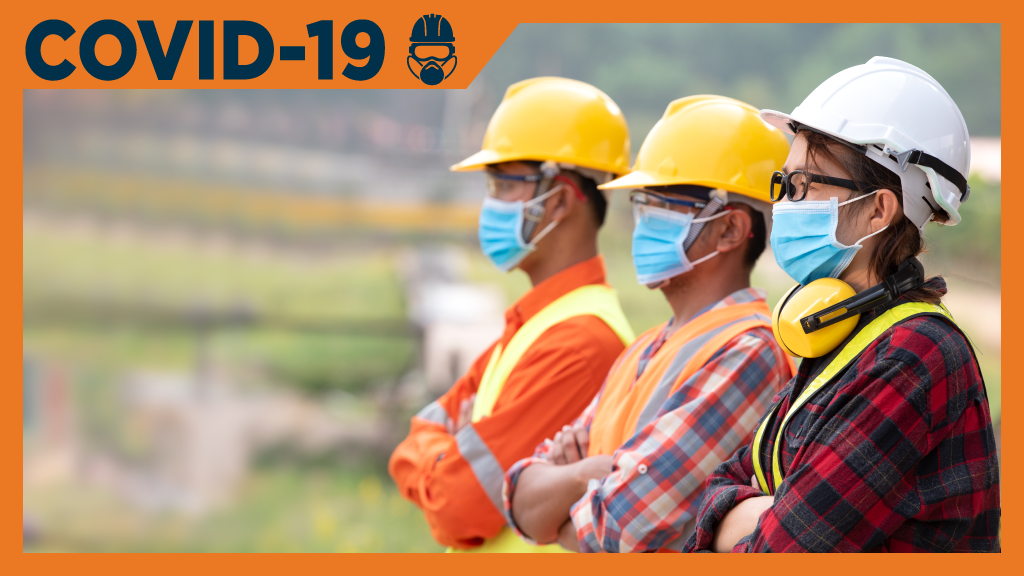Forehead thermometers are popping up everywhere from the retail sector to airports as a preventative assault against spreading COVID-19 and the construction industry in Western Canada has been a fast adapter.
But these devices come with caveats, industry advisers say.
Melanie Gorman Ng, a research scientist for the BC Construction Safety Alliance, said health organizations are warning that as a standalone device they are not that useful.
“They are only catching one symptom,” said Gorman Ng, but if a person has taken Tylenol, it may reduce the fever and escape notice.
As well, individuals may sustain fevers from other ailments that are not COVID-19 related.
“We are not saying don’t use them, but there are caveats,” said Gorman Ng, echoing others in the industry who say such monitoring should be part of a larger comprehensive program.
SureHire Occupational Health Testing’s CEO Kyle Powell foresaw COVID-19’s impact before it was realized in mid-March and had ordered 500 forehead thermometers to support workplace fitness testing for client employees.
Edmonton-based Powell said Western Canada is leading in the use of these fever meters with the three main industries being construction, manufacturing and industrial, and the transportation sectors. In the construction sector, the larger companies have been quick to pick up the technology, he said, and interest is now coming from Eastern Canada.
“We are using them within a comprehensive program, not temperature screening as a standalone solution,” he said, adding while it is better than nothing, it is not providing comprehensive coverage at work sites.
“We have it bundled together with other measures,” he said.
Powell points to some cautions. Individuals using forehead thermometers need training and also knowledge of care and maintenance of the device so that readings are consistent and accurate. Another need is a consult on what is a fever temperature. Various health organizations and provinces have differing standards.
A part of the comprehensive program is also having what Powell calls “protocols in place” to support the individual who tests positive when scanned. The company’s human resources personnel should have plans in place, he said.
Powell provides a one-hour training session on how to use the forehead thermometer for safety officers, but he also provides personnel to scan employees for companies that want an arms-length assessment eliminating any biases, such as allowing friends to bypass the system or using the screening in unfair ways.
Powell maintains all individuals should undergo screening if entering the jobsite.
“If you test one, then you test all. The virus does not choose. It doesn’t care what the person’s title is,” he said.
Screening is only the mid-point of a program. Powell said his company has put together an automated health questionnaire that goes out via text message to personnel every morning and collects information on a person’s general health. The program signals if an employee does not respond to the questionnaire.
The questionnaire looks for early symptoms of COVID-19 but also will pick up any other health concerns such as seasonal allergies.
In addition, it gathers information on the person’s travels such as requesting airline flight numbers and seat assignment or, if travelling by truck, information on individuals within the vehicle.
“Did you wear a face mask?” said Powell as an example of the questions asked. “The whole concept behind this is contact tracing as there is an incubation period (for the virus).”
The third part of the program, soon to be added, are vibration bands that alert any employee if another person comes within six feet.
“It comes with software,” he said, which stores the contact information and, should an employee test positive, the data provides a trail back to others who may have been exposed. Although orders have started to come in, he said, the bands don’t arrive until June.
Dave Baspaly, president of the Council of Construction Associations, said he’s aware that larger companies such as Peter Kiewit Sons and larger sites such as Site C have used the devices.
Baspaly said forehead thermometers are only part of the equation and tele-conferencing by construction associations has led to sharing best practices.
“The next thing you do is introduce controls,” he said, with some sites designating an individual to monitor onsite employees to ensure social distancing.
“You are not relying upon just one mitigation measure to keep the work site as safe as possible.”
Baspaly explained the industry is working together to ensure it remains an “essential service.”
“It is unprecedented in the construction industry the amount of sharing and collaborating that is going on today,” he added.











Recent Comments
comments for this post are closed